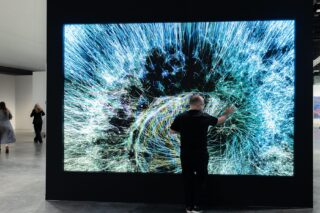Following the Intersolar 2023 and Solar E events, we highlight the main points from Siemens’ white paper on grid-interactive buildings.
In the rapidly evolving world of architecture and construction, the building sector stands at the forefront of addressing pressing environmental challenges. With increasing concerns about CO2 emissions, energy consumption, and the need for renewable energy sources, the industry is seeking innovative solutions to achieve energy efficiency and minimize its impact on the environment. This article explores the intersection of buildings, energy consumption, and the environment, highlighting the transformative potential of grid-interactive buildings.
A grid-interactive efficient building (GEB) is an energy-efficient building that uses smart end-use equipment and/or other onsite DERs to provide demand flexibility while co-optimizing for energy cost, grid services, and occupant needs and preferences, in a continuous and integrated way. Drawing insights from Siemens’ white paper on grid-interactive buildings, we delve into key concepts and cutting-edge technologies driving the smarter, greener future of the building sector.
Building Sector’s Impact on Energy Consumption and CO2 Emissions
The building sector is a significant contributor to energy consumption and CO2 emissions, accounting for a substantial portion of global greenhouse gas emissions. As the demand for energy in buildings continues to rise, it becomes imperative to explore sustainable energy sources and improve energy efficiency. Grid-interactive buildings, equipped with advanced technologies, have the potential to revolutionize the way buildings consume and generate energy, reducing CO2 emissions and reliance on traditional energy sources. The Smarter E is an event that brings together experts and stakeholders in the renewable energy sector to showcase the latest technologies, products, and solutions. The new model has three key main components: digitalization, decarbonization and democratization.
Grid-Interactive Buildings: Paving the Way for Energy Efficiency and Renewable Energy
Grid-interactive buildings integrate intelligent systems that optimize energy use based on factors such as demand response, time-of-use pricing, and real-time grid conditions. These buildings are designed to interact with the electrical grid, enabling dynamic load management and leveraging renewable energy sources. By utilizing smart energy management systems, grid-interactive buildings can intelligently balance energy supply and demand, maximizing the use of renewable energy and minimizing reliance on fossil fuels.
Transforming Buildings into Active Energy Participants
Grid-interactive buildings go beyond passive energy consumption; they become active participants in the energy ecosystem. Through features like energy storage systems, advanced metering infrastructure, and decentralized energy generation, these buildings facilitate a two-way flow of energy, allowing them to consume, store, and even supply electricity back to the grid. Digitalization is key and a prerequisite to ensure the interoperability of complex and heterogeneous systems across all buildings and grids and the flows between them.
The Role of Solar Panels in Sustainable Energy Generation
Solar panels play a crucial role in the renewable energy landscape, harnessing the power of the sun to generate electricity. While solar panels generate the most energy under direct sunlight, advancements in technology have made them increasingly efficient even on cloudy days or during nighttime. With proper maintenance, solar panels can provide a reliable and long-lasting source of clean energy for buildings, contributing to reduced CO2 emissions and greater energy independence. The grid-interactive building decarbonizes buildings through digitalized technologies, and the grid, reducing wider energy strains and supporting the whole energy grid system.
Looking Ahead: Shaping a Sustainable Future for Buildings
This new type of building brings organizations within them into a closer relationship with society, supporting everyone impacted by grid costs. We all are on the edge of a new exciting model, key industry events like Intersolar 2023, World Future Energy Summit, and European Sustainability Week bring together experts, innovators, and policymakers to drive discussions and showcase groundbreaking solutions for the building sector. These platforms provide opportunities to explore cutting-edge technologies, exchange knowledge, and foster collaborations that will shape the way buildings are designed, constructed, and operated in the years to come.
The building sector’s impact on CO2 emissions and energy consumption cannot be underestimated. However, the rise of grid-interactive buildings, with their integration of advanced technologies and renewable energy sources, offers a promising path toward achieving energy efficiency and sustainability. By embracing the power of solar panels, adopting smart energy management systems, and actively participating in the energy grid, buildings can become key contributors to a smarter, greener Europe and a more sustainable world. As we look to the future, it is crucial to embrace these transformative solutions and collaborate across sectors to create a built environment that harmonizes with the needs of the planet.










